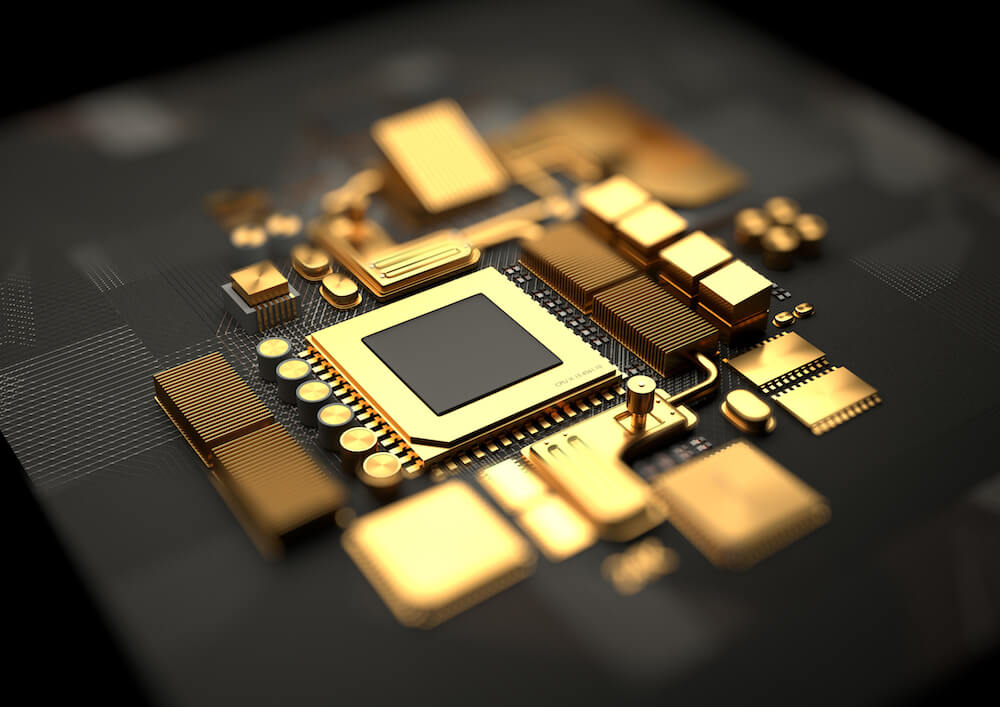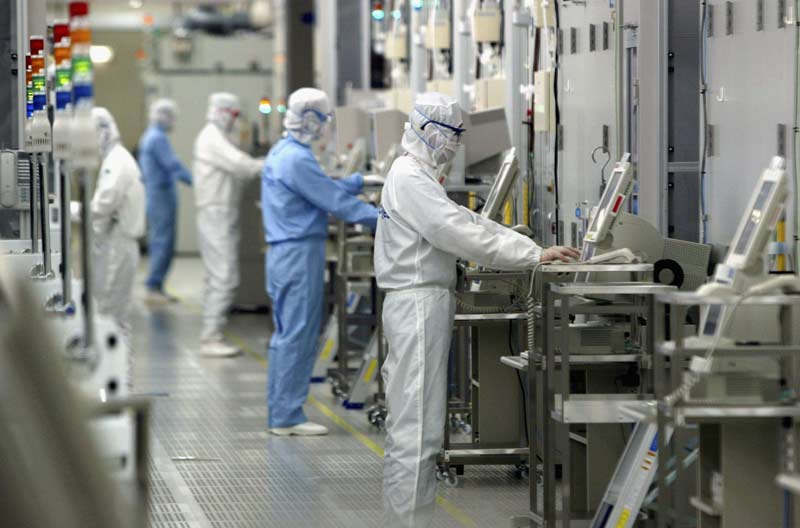
- Semiconductors are used in all modern electronic devices and technologies.
- Any disturbances in the supply chain of hardware including chips can have a great effect on the electronics industry in India.
- The world is facing a new threat due to a shortage of semiconductors or chips as Taiwan which is home to two-thirds of the world semiconductor manufacturing is severely affected by the worst drought in half a century.
- Governments across the world are subsidizing the construction of semiconductor plants to reduce the dependence on Taiwan for supplies.
- India has developed expertise in chip designing and in delivering technical services around microchip design but a lot needs to be done to achieve self-sufficiency.
- Even defence PSUs such as BEL rely on having the fabrication done abroad and not in India as India does not have the required facilities.
- However, Government of India is making all the effort to start chip plants in India. It is estimated that it would cost roughly $5-$7 billion to set up chip fabrication units in India.
- India is willing to offer companies concessions, including waivers on customs duty, research and development expenses, and interest-free loans.
- India aspires to have $400 billion of electronics manufacturing by the year 2025. Who can miss seizing this business opportunity?
Semiconductors are used in all modern electronic devices and technologies, with applications that range from electronic products and IT hardware to defense technology, industrial electronics, medical electronics, automation (workplace, healthcare, manufacturing, etc.), and the Internet of Things (IoT).
India is an IT hub for the world’s software and service Industry. However, the revenue we get in software is given back to hardware companies of Taiwan, South Korea, Japan, China, Malaysia to name a few. Any disturbances in the supply chain of hardware including chips can have a great effect on the electronics industry in India. It is said that in the next few years India’s oil imports will be overtaken by hardware. Now it is in India’s national interest and security to safeguard the smooth flow of hardware and chips to the industry.
World Economy is in shambles due to COVID-19. On the other hand, Online Education, Work from Home, 5G Telecom Revolution, Auto Boom, IoT, Artificial Intelligence, Robotics, Direct Benefit Transfers, Technology in Defense and Medical fields have flourished during the same period. However, the world is facing a new threat due to a shortage of semiconductors or chips.
Why the shortage?

The reason is Taiwan which is home to two-thirds of the world semiconductor manufacturing with 65% of global production is severely affected by the worst drought in half a century. The drought has impacted on production of semiconductors as it requires voluminous quantities of water to churn out chips. Water is needed to clean the wafer base, etch patterns, polish layers and rinse components throughout the manufacturing process. However, due to water shortage, the chip supply is getting hit.
Not just India but several countries including the US and Japan are now worrying about the chip shortage. In the US, Samsung Electronics Co. was forced to close two of its chip factories in Austin temporarily due to severe weather in Texas. The auto chipmaker Renesas Electronics Corp’s plant in Japan was hit first by an earthquake in February and then a fire in March that executives say would require months to recover.
The increased demand from the consumer electronics industry was bolstered as people worked from home and played more video games during the health crisis. Sanctions against Chinese technology companies have also played a role. So a shortage of chips can gut the electronics industry.
Hence governments across the world are subsidizing the construction of semiconductor plants to reduce the dependence on Taiwan for supplies.
India at the Crossroads
India has developed expertise in chip designing and in delivering technical services around microchip design but a lot needs to be done to achieve self-sufficiency. Even defence PSUs such as BEL which, along with Wipro, designed and developed an indigenous System on Chip (SoC) for applications such as tablets and secured phones, relied on having the fabrication done abroad and not in India as India does not have the required facilities.
There are two aspects of a chip system domain. One is the chip design aspect and the other is the manufacturing aspect. The design domain is strong in India, in areas like networking, microprocessors, analog chip design, and memory subsystems. There are several MNCs, design centers, service houses, and local chip designing companies in India working for government requirements. Most chip designers outsource to third-party manufacturers who have the expertise and scale in developing such chips.
With respect to manufacturing, India is setting up semiconductor FAB facilities and its ecosystem. This was one of the main strategies of the National Policy on Electronics 2019 (NPE 2019) that aims to position India as a global hub for Electronics System Design and Manufacturing (ESDM). It was reported that India is offering more than $1 billion in cash to each semiconductor company that sets up manufacturing units in the country to strengthen its electronics supply chain. The government has asked the industry for feedback.
Can India achieve Self-Sufficiency?

India wants to establish reliable suppliers for its electronics and telecom industry to cut dependence on China and Taiwan. Earlier India had tried to woo semiconductor players but firms were deterred by India’s infrastructure, unstable power supply, bureaucracy, and poor planning. India in December invited an “expression of interest” from chipmakers for setting up fabrication units in the country or for the acquisition of such manufacturing units overseas by an Indian company or consortium.
At last, one can say that FAB Revolution in India is the need of the hour. Before 2014 there were only Two Mobile Manufacturing Plants in India but now India is the base of smartphone manufacturing. A shortage of chips can hold up India’s auto sector just when it is seeing early signs of a recovery in demand after sales plunged in 2020 because of the pandemic. However, Government is making all the effort to start chip plants in India. It is estimated that it would cost roughly $5-$7 billion to set up chip fabrication units in India and take 2-3 years after all the approvals are in place.
Earlier this year, the Indian government sought proposals from interested applicants to either set up (and/or expand) semiconductor wafer/device fabrication plants (FABs) in India or their acquisition outside India. The notification about the Expression of Interest is available in Korean, Japanese, Hebrew, and Chinese which is an indication of the expected investment from foreign players. The deadline for these proposals (Expression of Interest) is now extended from March 31, 2021, to April 30, 2021.
So the chip manufacturing industry in India will boom and things can move fast as the government is determined this time. It is for the private sector to explore. Indian private industries have to believe and go with the project as it is of national importance. We saw private players like Infosys, Wipro, Tech Mahindra (Satyam), TCS many others emerge and lead India’s IT sector. Can the private industry similarly lead in chip manufacturing as India needs to be self-sufficient in this sector? If not, India would be vulnerable to similar disruptions in chip manufacturing supply chains during a natural calamity, war, or pandemic.
India is willing to offer companies concessions, including waivers on customs duty, research and development expenses, and interest-free loans. Indian companies and foreign consortiums should use this opportunity and trust India. India is poised to increase its share in global manufacturing of mobile phones, IT hardware, Automotive Electronics, Industrial Electronics, Medical Electronics, IoT, and other devices in the near future as it aspires to have $400 billion of electronics manufacturing by the year 2025. Who can miss seizing this business opportunity?
(The views expressed are authors own and does not necessarily reflect the opinions of SamvadaWorld)
M.AM.PhiL/(PhD SNU South Korea)
